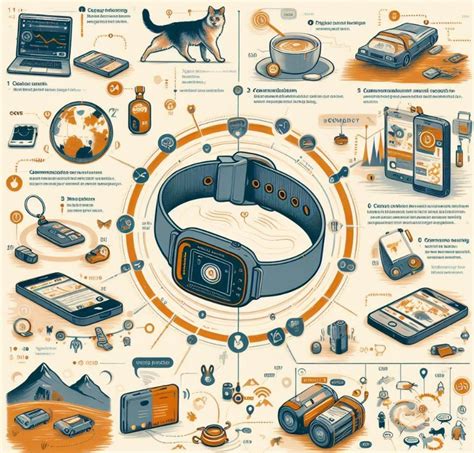How Do Animal Tracking Bracelets Work
Ronan Farrow
Apr 04, 2025 · 3 min read

Table of Contents
How Do Animal Tracking Bracelets Work?
Animal tracking bracelets, also known as wildlife tracking collars, are remarkable pieces of technology playing a crucial role in wildlife conservation and research. They provide invaluable data about animal behavior, migration patterns, and habitat use, helping scientists and conservationists make informed decisions to protect endangered species and manage ecosystems effectively. But how do these sophisticated devices actually work? Let's delve into the inner workings of animal tracking bracelets.
The Core Components: A Closer Look
Animal tracking bracelets typically consist of several key components working in harmony:
1. The GPS Unit: Pinpointing Location
The heart of the system is the Global Positioning System (GPS) receiver. This miniature device receives signals from orbiting GPS satellites to determine the animal's precise location on Earth. The accuracy of this location data varies depending on the quality of the GPS receiver and environmental factors like dense forest cover, which can sometimes interfere with signal reception.
2. The Transmitter: Sending the Data
Once the GPS unit has determined the location, the data is transmitted to researchers via various methods. This often involves a radio transmitter that sends signals to nearby receivers. The range of these transmissions varies based on the power of the transmitter and the surrounding environment. Some more advanced systems utilize satellite communication for longer-range transmission, allowing researchers to track animals across vast distances.
3. The Power Source: Keeping it Going
Powering these devices is crucial. Animal tracking bracelets typically rely on long-lasting batteries, often lithium-ion, designed to withstand various environmental conditions. The battery life varies depending on the device's features and transmission frequency; some can last for months, even years, while others need more frequent battery replacements.
4. The Data Storage: Recording the Journey
Many modern tracking bracelets also incorporate data storage capabilities. This allows the device to record location and other environmental data (like temperature or activity levels) even when it's not actively transmitting. This is particularly useful in areas with poor signal reception. The stored data can then be downloaded later when the animal is in a location with better connectivity.
5. Sensors and Additional Features: Beyond Location
While location tracking is the primary function, some advanced tracking bracelets incorporate additional sensors. These can include accelerometers to measure movement, gyroscopes to detect orientation, and even heart rate monitors. This extra data provides a far richer understanding of the animal's behavior and overall health.
Different Types of Tracking Bracelets: Tailored to the Animal
The design and functionality of animal tracking bracelets vary depending on the species being tracked and the research goals. Smaller animals may require lightweight, minimally invasive devices, while larger animals can accommodate larger, more powerful trackers. Consideration is also given to the animal's habitat, with devices being designed to withstand harsh environmental conditions.
Ethical Considerations: Minimizing Impact
The use of animal tracking bracelets raises important ethical considerations. It's crucial that the devices are designed and deployed in a way that minimizes any potential harm or distress to the animal. This includes ensuring the bracelet is comfortable, lightweight, and unlikely to interfere with the animal's natural behaviors. Regular monitoring is essential to ensure the bracelet remains functional and isn't causing any problems.
The Impact on Wildlife Research and Conservation: A Powerful Tool
Animal tracking bracelets have revolutionized wildlife research and conservation efforts. By providing detailed data on animal movements, behavior, and habitat use, they enable scientists to:
- Monitor endangered species populations: Track movements and identify critical habitats.
- Study migration patterns: Understand how animals move and adapt to changing environments.
- Assess habitat quality: Identify areas needing protection or restoration.
- Investigate human-wildlife conflict: Understand how animals interact with human activities.
The information gathered from these trackers is invaluable for developing effective conservation strategies and ensuring the long-term survival of many species. The continued development and refinement of these technologies promise even greater insights into the animal kingdom in the years to come.
Featured Posts
Also read the following articles
| Article Title | Date |
|---|---|
| How Fast Can Clownfish Swim | Apr 04, 2025 |
| How Did Brewster Spend His Millions | Apr 04, 2025 |
| How Do You Read An Emf Meter | Apr 04, 2025 |
| How Did Jake Adams Died | Apr 04, 2025 |
| How Does A Pilot Light Go Out | Apr 04, 2025 |
Latest Posts
-
How Fast Is A Dixie Chopper
Apr 04, 2025
-
How Fast Is 8 Hp
Apr 04, 2025
-
How Fast Is 8 Horsepower
Apr 04, 2025
-
How Fast Is 7 5 Hp In Mph
Apr 04, 2025
-
How Fast Is 6 Seconds In 1 8 Mile
Apr 04, 2025
Thank you for visiting our website which covers about How Do Animal Tracking Bracelets Work . We hope the information provided has been useful to you. Feel free to contact us if you have any questions or need further assistance. See you next time and don't miss to bookmark.
